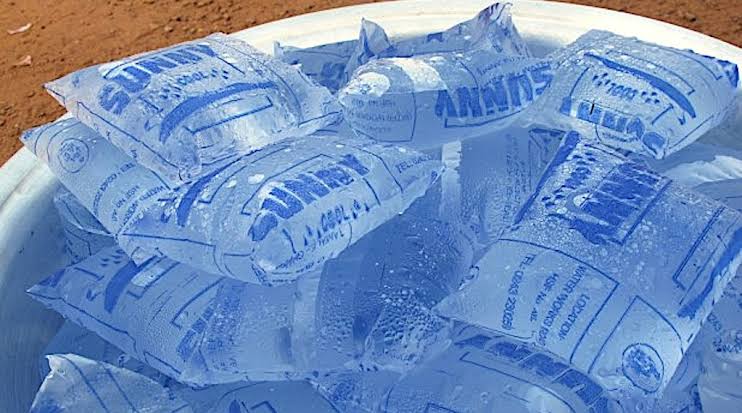Victor Andrew
In Nigeria and much of West Africa, millions rely on a simple plastic bag of water every day.
In the average Nigerian household, full sacks of sachet water are common because, beyond convenience, sachet water is a necessity.
At small street kiosks, the top-selling item is sachet water. Locally called pure water, it outsells soda and snacks by a wide margin.
Beyond quenching thirst, sachet water is a booming market in Nigeria. A 2024 Nairametrics field survey across Lagos, Port Harcourt, and Abuja found sachet water to be the fastest-selling micro-retail product. A shop owner in Lagos makes a profit of 200 naira on just one bag of these sachets every 10 to 15 minutes. Some estimates suggest that Nigerians may be consuming 300 million sachets daily.
In a country without widespread safe tap water, the sector functions as an essential service with strong financial incentives. In one University of Jos community survey, 93.1% of respondents identified sachet water as their predominant drinking source.
Toxic Thirst
My initial concern about sachet water – and it’s an obvious one – is the small plastic fragments that can detach when people tear open sachets with their teeth.
Additionally, most of this water is sold outdoors, baking under the sun for hours, sometimes even days. All that UV radiation slowly breaks down the plastic packaging.
As the plastic breaks down, additives and other compounds can leach into the water, and microplastics can form.
You’ve probably heard of microplastics: tiny fragments of plastic, less than five millimeters long and often totally invisible, that break off from the inside of the sachet.
It’s not just the small bits of plastic that are the problem; it’s the toxic chemicals they contain. Research has found horrifying compounds leaching into this water after sun exposure; chemicals like benzene, toluene, and xylene, substances that health agencies list as known toxins and potential human carcinogens.
What is sold as ‘pure water’ is starting to resemble a chemical cocktail.
Back in 2018, a team of Nigerian researchers led by James Matthew Anayo conducted a study. They took sachet water from several different brands, left it out in the sun, and analyzed the water over a five-day period.
The results were shocking. Chromatograms, the chemical fingerprints of the water, told the story.
Before sun exposure, the water was relatively clean, with just a few spikes. After just three days in the sun, the same water looked like a forest of spikes. Each spike represented a new chemical leached from the plastic.
The conclusion from these researchers was clear: the longer the water sits in the sun, the more contaminated it gets. What might start as just a little plastic breakdown on day one becomes a full-blown leaching event by day three.
The Body as the Final Landfill
An estimated 300 million sachets are consumed every single day, and many have been sun-exposed before sale. That contamination doesn’t just disappear. It builds up on a microscopic level inside the human body. These microplastics are finding their way deep inside us.
Our bodies are becoming the final dumping ground for all this plastic waste.
Studies have detected these particles in human blood, lung tissue, brain tissue, and placentas, suggesting these substances are potentially being passed from one generation to the next before a baby is even born.
While the full health impacts are still being determined, emerging evidence links chronic exposure to inflammation, fertility problems, and elevated cancer risk.
A Two-Edged Sword
The same plastic sachet causing all this internal harm is also creating an environmental catastrophe.
After just one use, these sachets are discarded. They clog drains, contributing to urban flooding and creating stagnant water where disease can thrive. They pollute beaches and waterways, where wildlife ingest them, disrupting ecosystems and poisoning our food chain.
And here’s a cruel twist. The sun is causing two problems. On one hand, it’s creating a chemical problem by leaching toxins into the water. At the same time, that same UV radiation makes the plastic brittle and low-quality, which complicates recovery. Thin LDPE film is technicallyrecyclable, but in practice, it’s hard to collect and has low value, especially in West Africa, where waste pickers are paid by weight.
Nigeria’s broader collection and recycling infrastructure remains limited, and this further constrains recovery.
Where Do We Go From Here?
Sachet water exists for a reason: people need clean, affordable water, and the trade supports livelihoods.
Yet it may also be slowly poisoning millions of people and devastating the environment.
It leaves us with a tough, uncomfortable question: When the solution for survival becomes a source of poison, where do we go from here?











